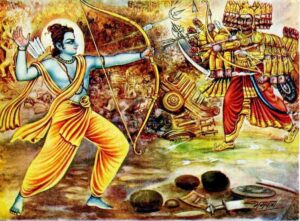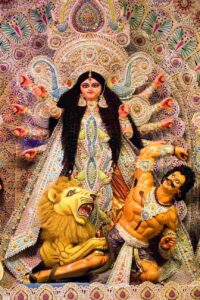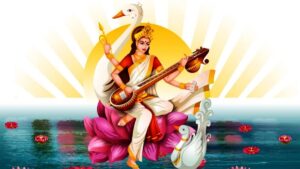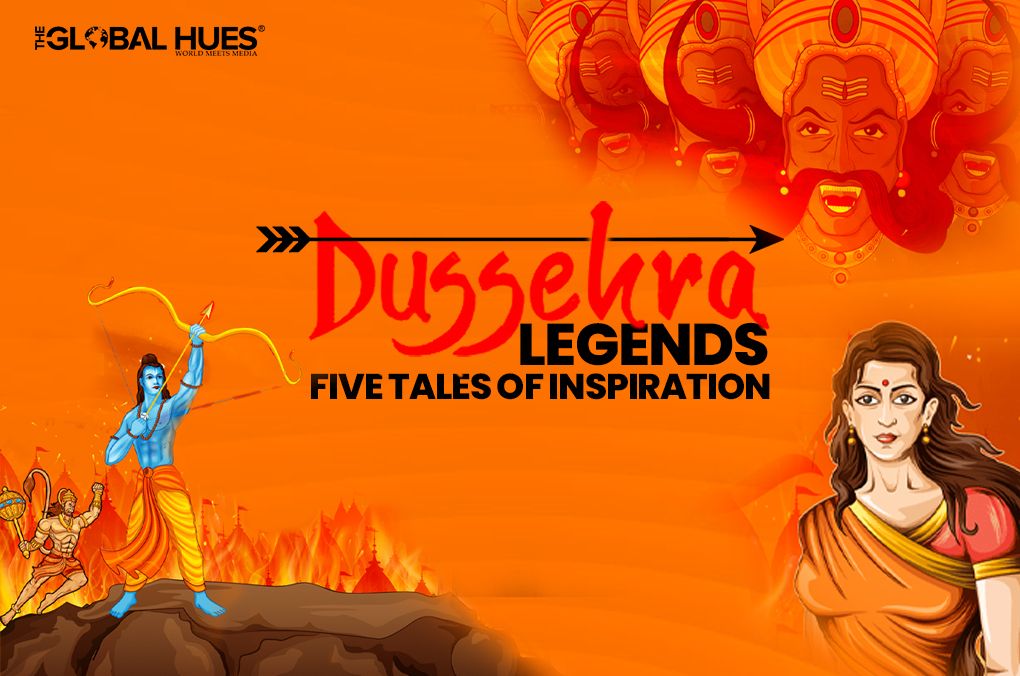Dussehra, also known as Vijayadashami, marks the end of the nine-day-long Navratri festival. This year, Dussehra falls on 24th October (Tuesday). The Dashmi Tithi will start at 5.44 pm on October 23, 2023, and end on October 24, 2023, at 3:14 pm.
This festival commemorates the triumphant victory of Lord Rama over the demon king Ravana. However, it’s worth noting that while this narrative holds true for Dussehra on a broader scale, various regions across India have their own unique legends and stories associated with this festive occasion.
In this article, we delve into the various stories based on Dussehra.
Stories Related To Dussehra
-
Ramayana and Ravana’s Defeat

People celebrate Dussehra to commemorate Lord Ram’s victory over Ravana. According to Hindu mythology, Ravana kidnaps Sita and takes her to Lanka. Lord Rama fights Ravana and his army with the help of Lakshman, Hanuman and an army of monkeys. He killed Ravana on the tenth day of the battle. That’s why people burn effigies of Ravana, to signify the triumph of good over evil. After killing Ravana, Rama, Sita, and Lakshmana returned to Ayodhya on Diwali.
-
Goddess Durga Killing Mahishasura

The festival of Navaratri revolves around the battle between the Goddess Durga and Mahishasura for nine days, and on the tenth day, the Goddess emerges victorious over the demon. Hence, that day is known as Vijayadashmi. Each of the nine days of Navaratri is dedicated to a powerful form of the Goddess. In the eastern and northeastern parts of the country, the celebration of Navarati happens for five days. The Bengalis call it Bijoya. People play dandiya and garba during the nine days of Navaratri. This festival symbolises the divine feminine energy over evil forces.
Also Read: Nine Forms of Goddess
-
The Return of The Pandavas
In the Hindu epic Mahabharata, the Pandavas, after completing their 12 years of exile, retrieved their weapons from a Shami tree on Dussehra day. During their exile, the Pandavas had hidden their weapons in the tree during the exile to reclaim their kingdom. After reclaiming their weapons, they reveal their true identities before the Kauravas, who attacked King Virat to steal his cattle. This event has become a part of the Dussehra celebrations, and people worship the Shami tree. Exchanging the leaves of the Shami tree on Vijayadashmi symbolises goodwill.
-
Worship of Goddess Saraswati

Saraswati Pooja is an important part of the Navaratri festival, especially in South India. People worship Goddess Saraswati in the last three days of Navaratri in Karnataka, Tamil Nadu, Andhra Pradesh, and Kerala. People observe the last day of Navaratri as Saraswati Pooja and Ayudha Pooja. Books and tools are kept before the idols and are not touched until Vijayadashmi Day. Another legend mentions that Goddess Saraswati created powerful weapons on Vijayadashmi Day to kill the demon Mahishasura.
-
Dussehra and The Legend of Kautsa
In the town of Paithan, young Kautsa completed his education under Sage Varatantu, and he wanted to give him a gift. But Sage Varatantu declined. As Kautsa was still insisting, the sage asked for 140 million gold coins; ten million each for the 14 sciences he had taught him. Kautsa sought help from King Rahu, who received gold coins from Lord Indra, as he made a rain of gold coins with the help of Lord Kuber. The king collected all the gold coins and gave it to Kautsa. He gave the gold coins to his Guru, and his Guru returned the extra gold coins. Kautsa went to return the leftover gold coins to the King, but he refused to take back the daan he had given. So, Kautsa decided to share the gold with the people of Ayodhya. The tradition has not changed with time, and the leaves of the Aapati tree are now symbolic of gold coins. The tradition is a reminder of Kautsa’s generosity.
SummingUp
These five stories tell us why people celebrate Vijayadashmi in different ways across the country, and every region has their own legends and stories.




